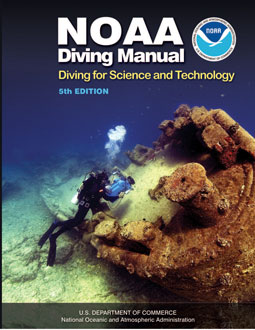DEPTH Blog
Drysuits 101
Drysuits provide the greatest form of passive thermal protection for the diver. They are designed as one piece suits with a waterproof zipper for entering and exiting and have attached boots and seals at the diver’s wrists and neck to provide a dry internal environment. The suits are normally designed so a wide variety of insulating undergarments may be worn beneath them. These undergarments trap a layer of air providing the primary protection against cold. Too much air trapped in the drysuit can create buoyancy problems because the air forms a “bubble” that will move inside the suit, but some air is needed in order prevent the suit material from compressing and catching skin in the folds and causing a suit squeeze. A suit “squeeze” can be uncomfortable but is avoidable by adding a small amount of air to remove any suit wrinkles.
Drysuits can increase a diver’s bottom time dramatically by preventing large amounts of heat loss. A warm diver’s body doesn’t need to “burn” as many calories to remain comfortable. Keeping the diver warm enhances performance while also lowering the risk of hypothermia. By varying the amount of undergarment (insulation) worn underneath the drysuit, it is possible to dive in a wide variety of water temperatures. When purchasing a drysuit, the diver should try the suit on with the thickest undergarment he anticipates using in order to ensure a proper fit.
Drysuits are made from a variety of materials, including foam neoprene, crushed or compressed neoprene, tri-laminates, urethane coated fabrics, and vulcanized rubber. Each type of material has advantages and disadvantages. A heavy-duty suit made of vulcanized rubber, for example, is worn with cold water undergarments and is available with mating yokes to accommodate various diving helmets.
Foam neoprene (wetsuit material) has good stretch and thermal characteristics. However, it tends to develop leaks over time as cracks occur in the neoprene bubble layers and water eventually migrates through the material.
Crushed and compressed neoprene are rugged drysuit materials that have moderate stretch and some inherent insulation. The disadvantages to this type of suit are its relatively heavy weight and higher cost.
TLS stands for tri-laminate suit. This is an extremely lightweight material originally developed for chemical warfare. The material is very flexible and reasonably rugged, but does not stretch. A proper fit is critical with this type of suit. This requires a larger suit in order to reach, bend, and twist.
Urethane coated nylon material is similar in appearance to TLS, but is not nearly as flexible nor as reliable. The advantage to urethane coated nylon drysuits is its lower cost.
Vulcanized rubbermaterial has very little to no stretch as compared to crushed or compressed neoprene or foam neoprene. Vulcanized rubber dries quickly and is quick and easy to repair, however, vulcanized rubber suits cannot be tailored to be as form-fitting as crushed neoprene or TLS suits. They are also relatively heavy suits and are preferred for diving in contaminated water because they are the easiest of all drysuit types to decontaminate.
The two main styles of drysuits are shoulder entry suits and self-donning suits. With a shoulder entry suit, the diver gets into the suit through the back by opening the waterproof zipper. The disadvantage of a shoulder entry suit is that it requires assistance to get in and out of the suit.
Self-donning drysuits have the major advantage of allowing the diver to get in and out of the suit without assistance. The disadvantage is that self-donning suits are usually more expensive than a similar shoulder entry suit. Drysuits are designed with boots with either hard or soft soles.
NOTE: Polluted water diving requires specialized equipment and training. (See NOAA Diving Manual 5th Edition Chapter 16 for more information on polluted water diving.
(Source: NOAA Diving Manual: Diving for Science and Technology, 5th Edition; 2013, Best Publishing Company)
SUGGESTED READING
|
NOAA Diving Manual, 5th Edition Used by divers everwhere, the NOAA Diving Manual 5th Edition is the most comprehensive resource for learning about dive equipment, dive planning, decompression, and emergency medical care of an injured diver. Chapters also include more advanced concepts such as physics and physiology, mixed gas diving, surface-supplied diving, saturation diving, and the list goes on. Need a textbook for your next course? Use this manual! The manual is the perfect resource for scientific divers, commercial, military, public safety, recreational divers, and dive leaders! |
When you subscribe to the blog, we will send you an e-mail when there are new updates on the site so you wouldn't miss them.








